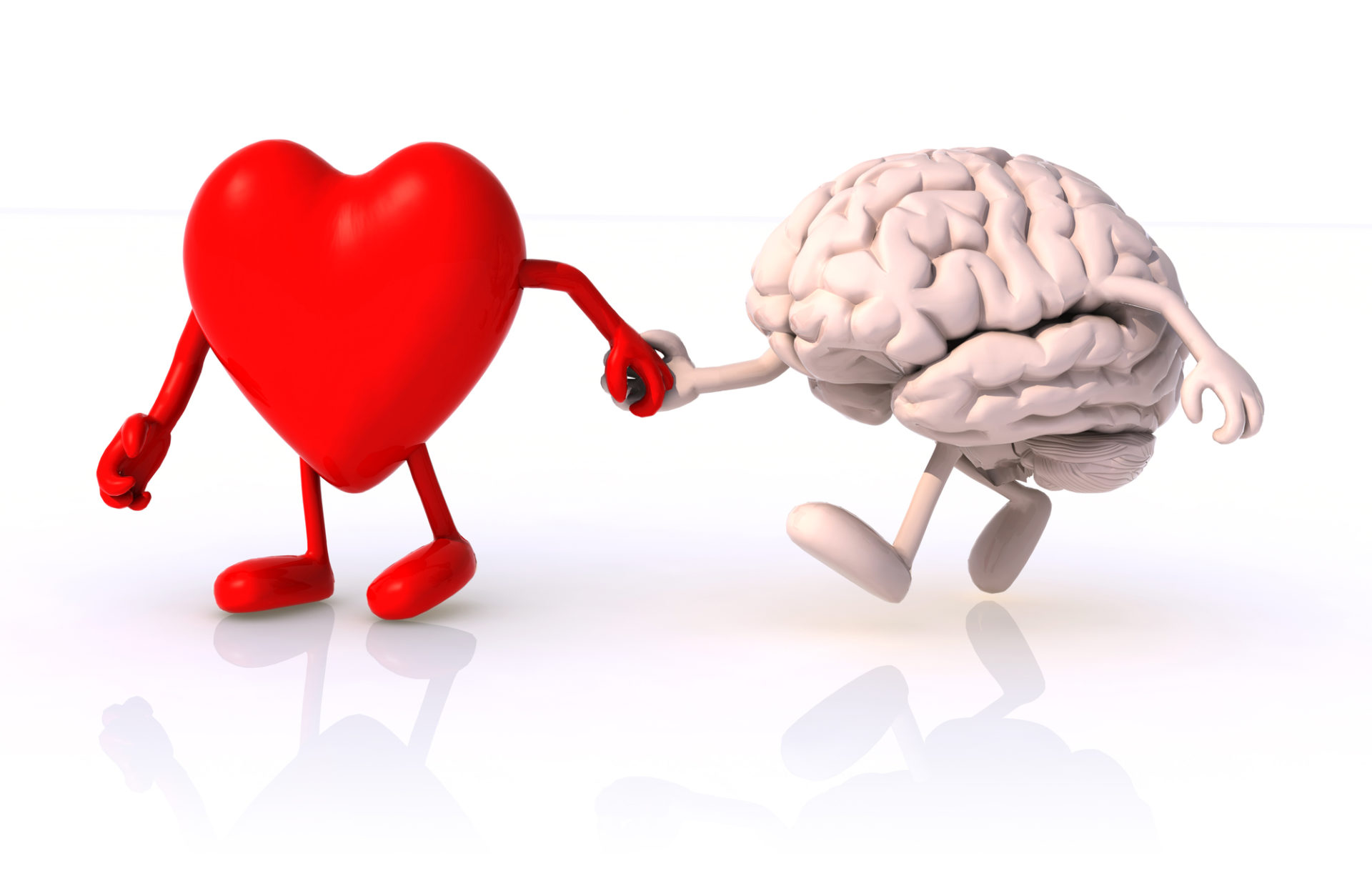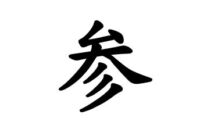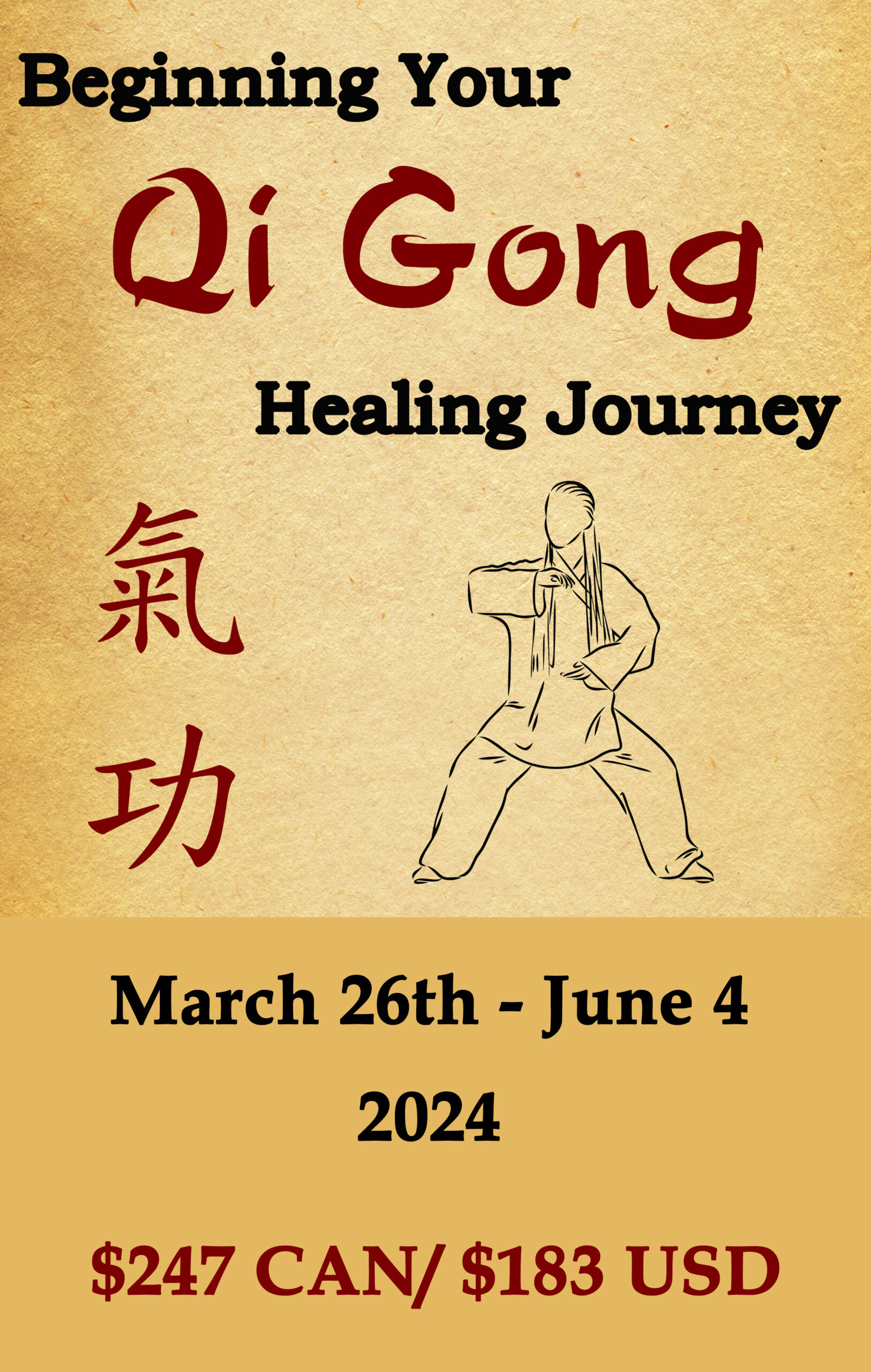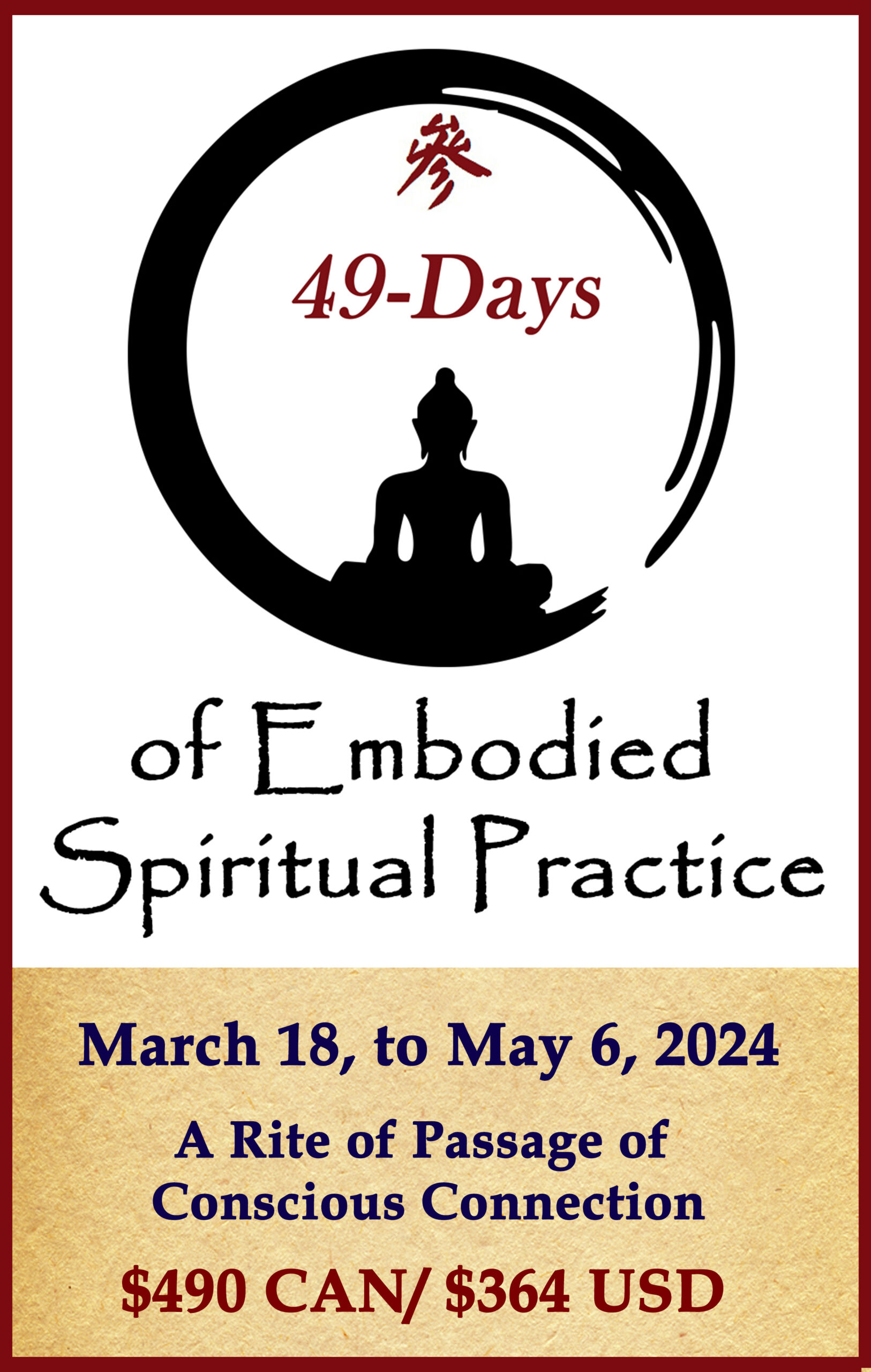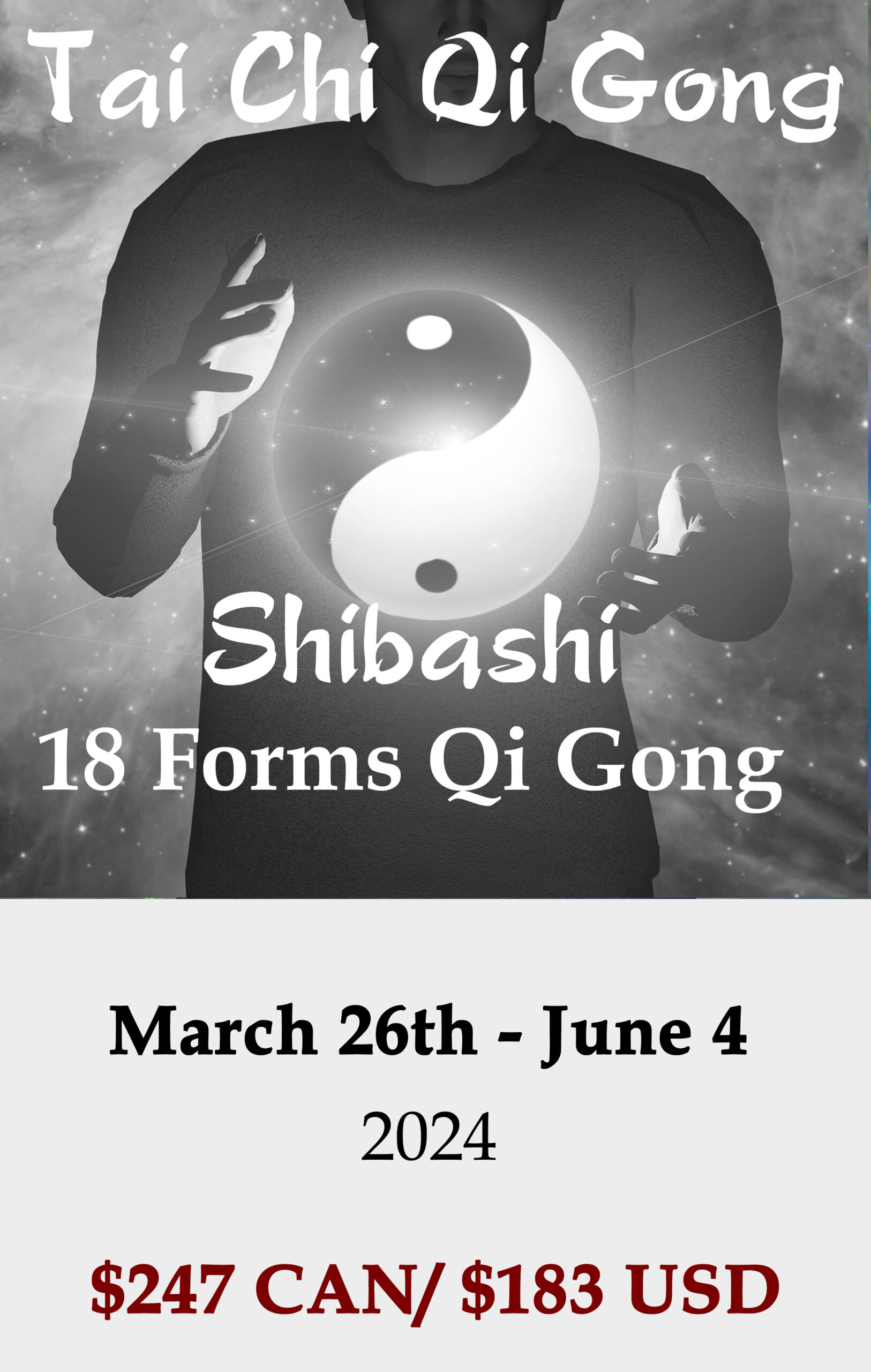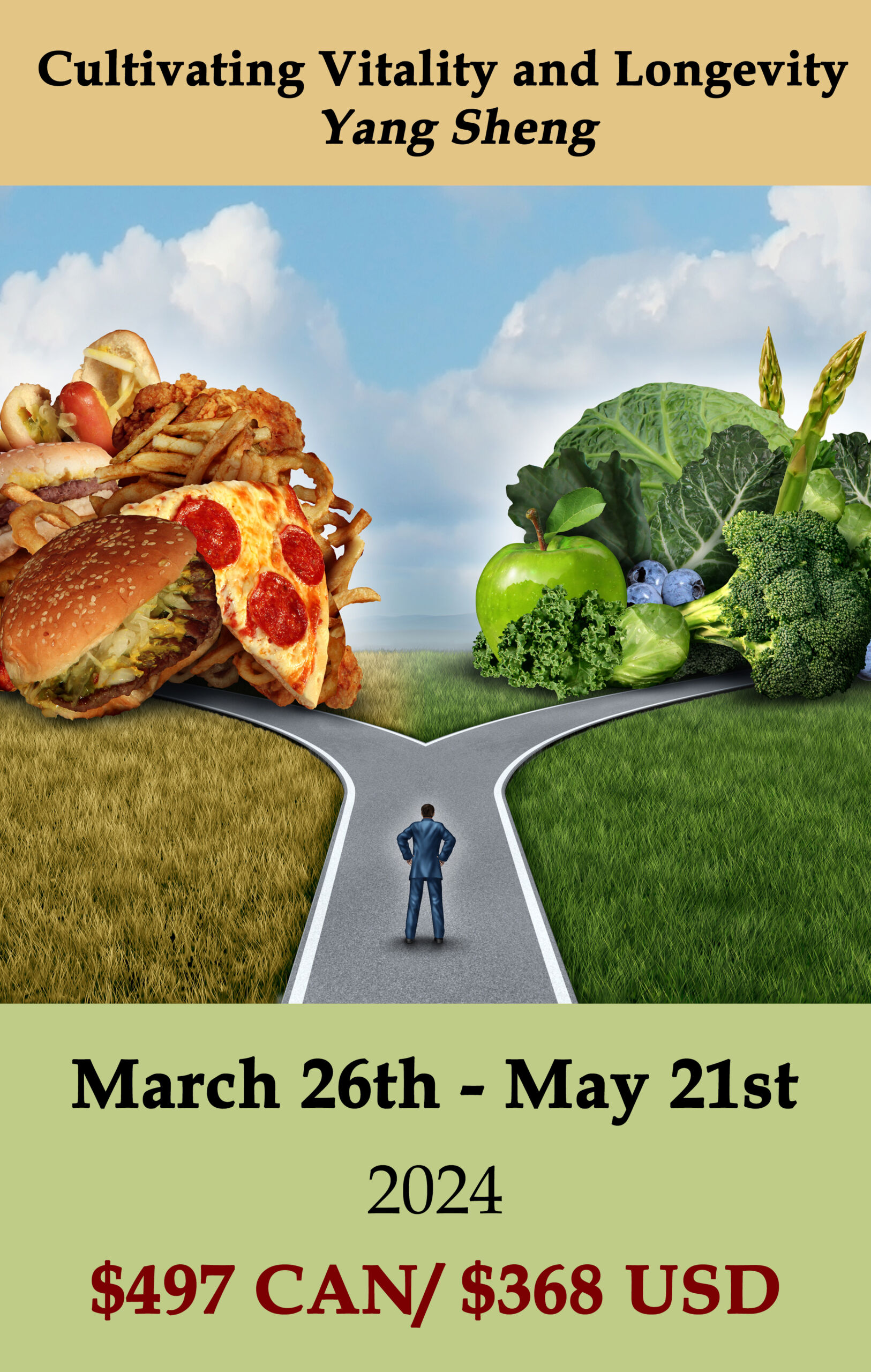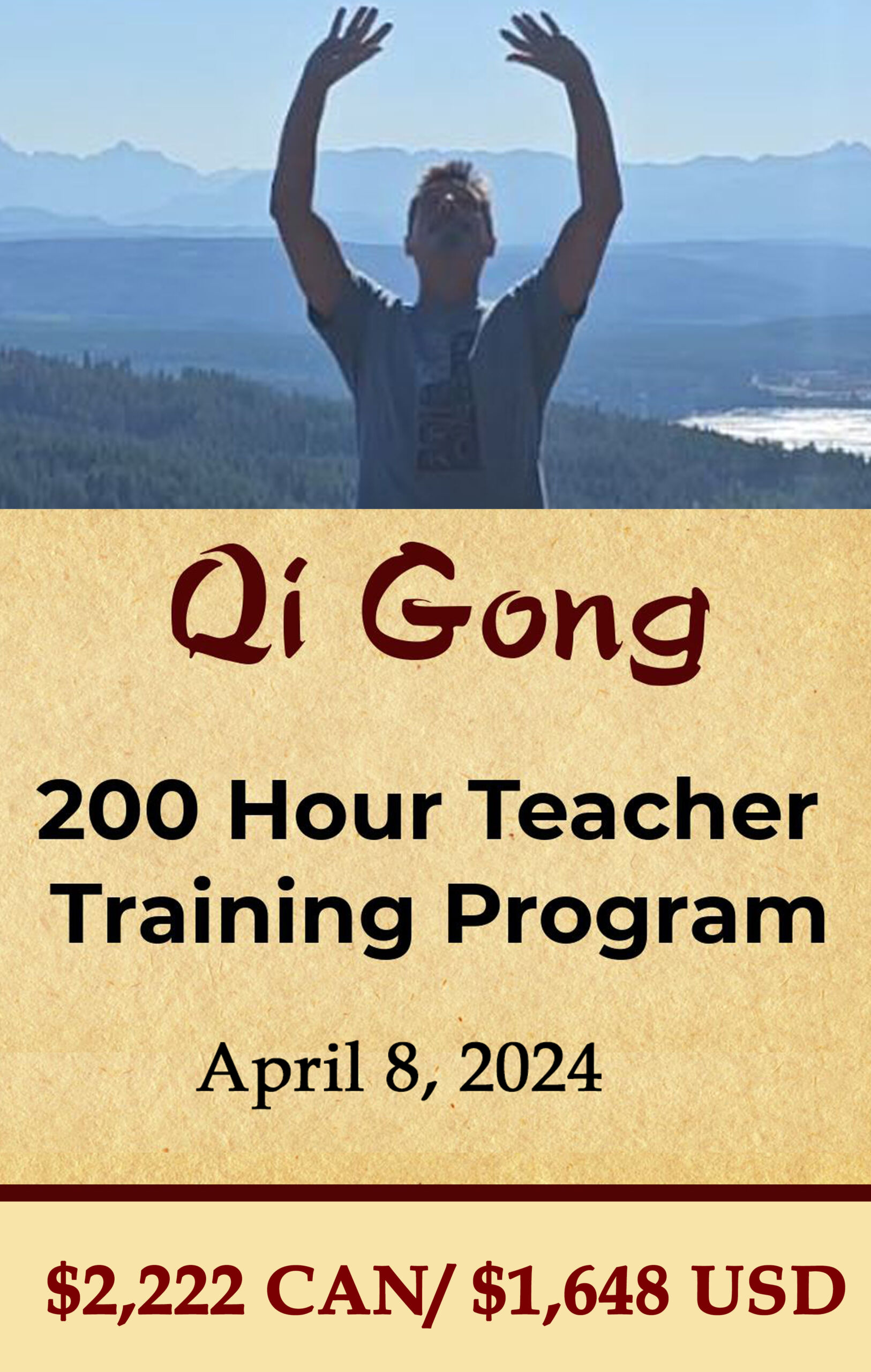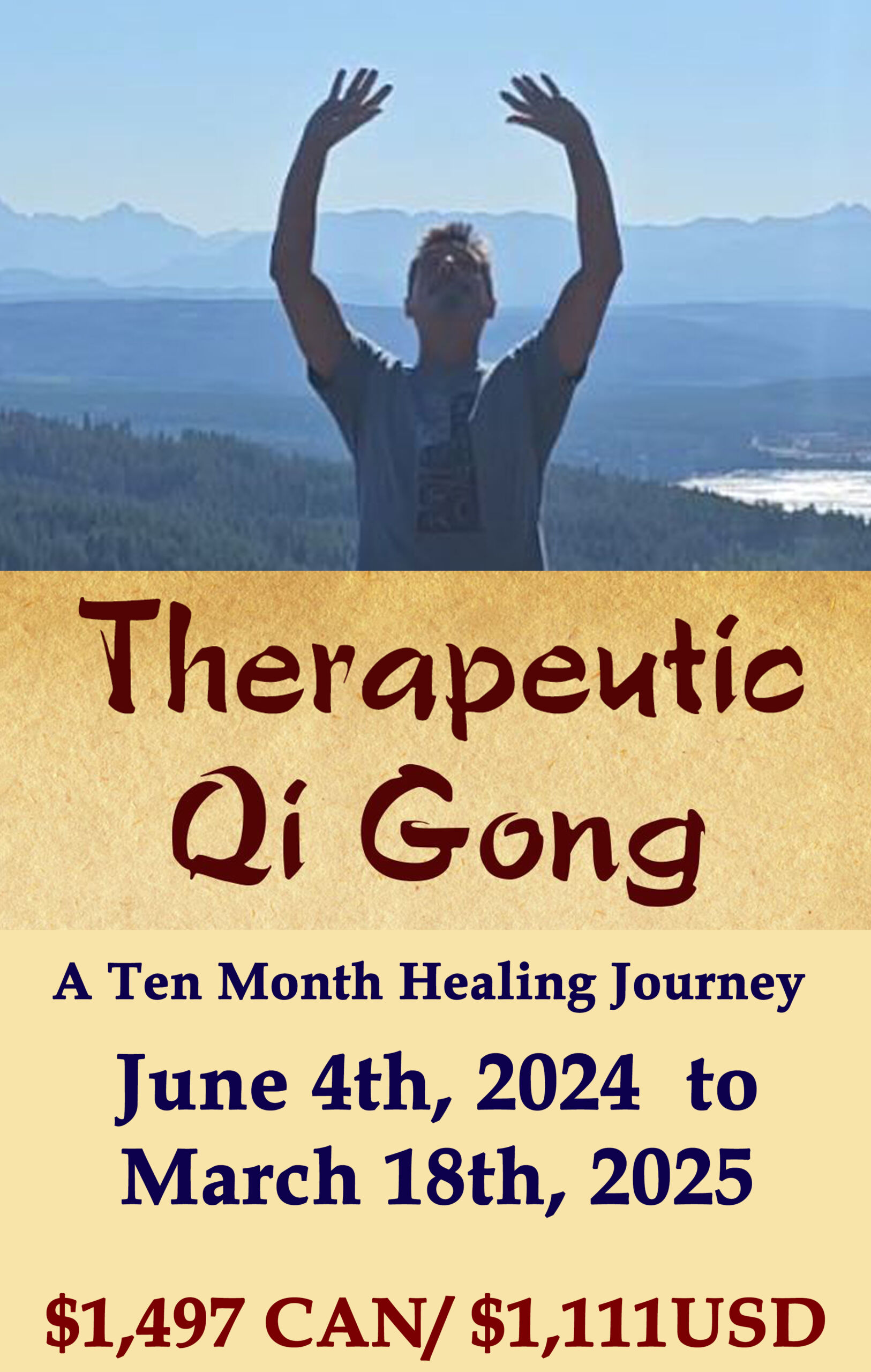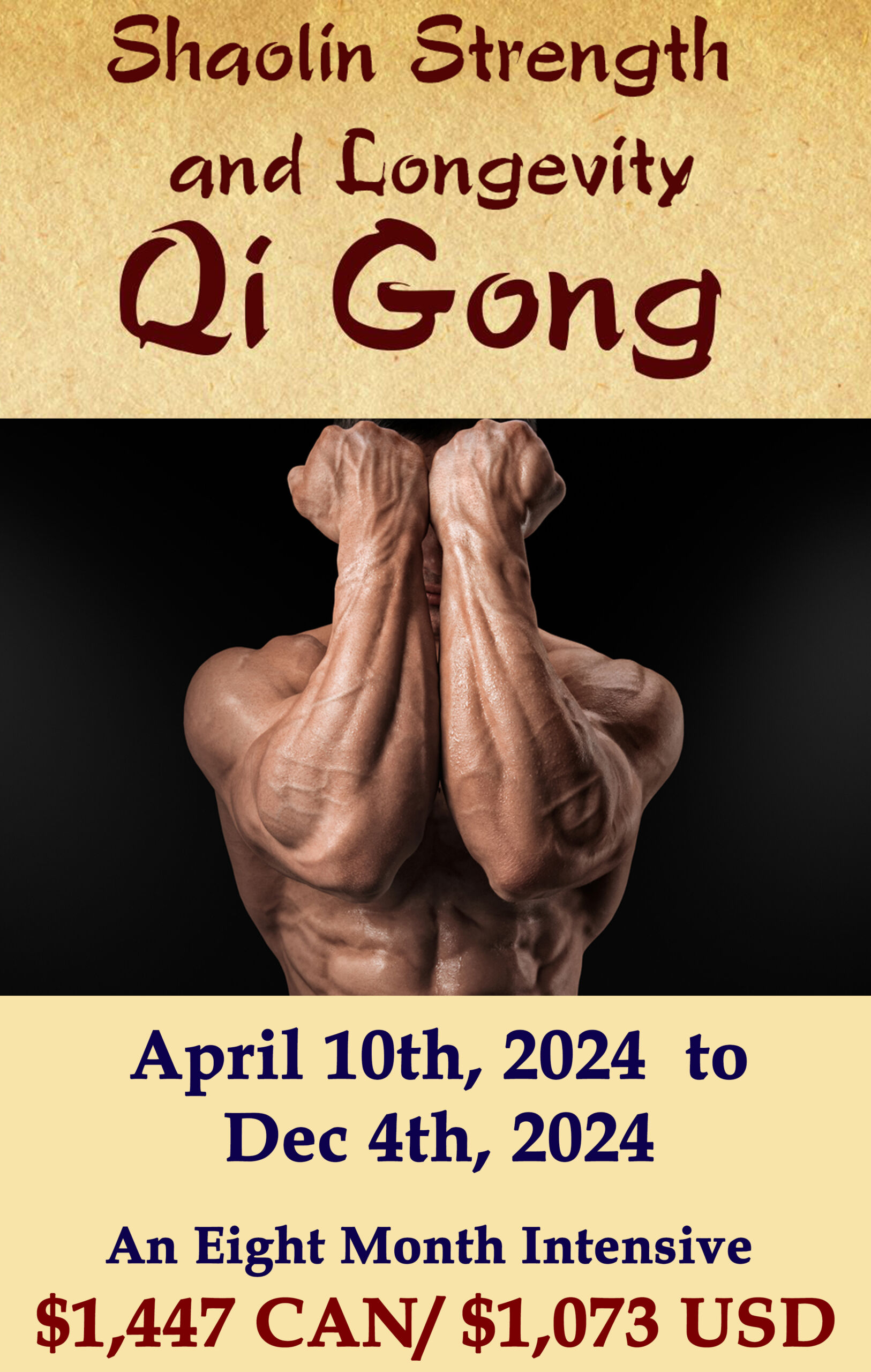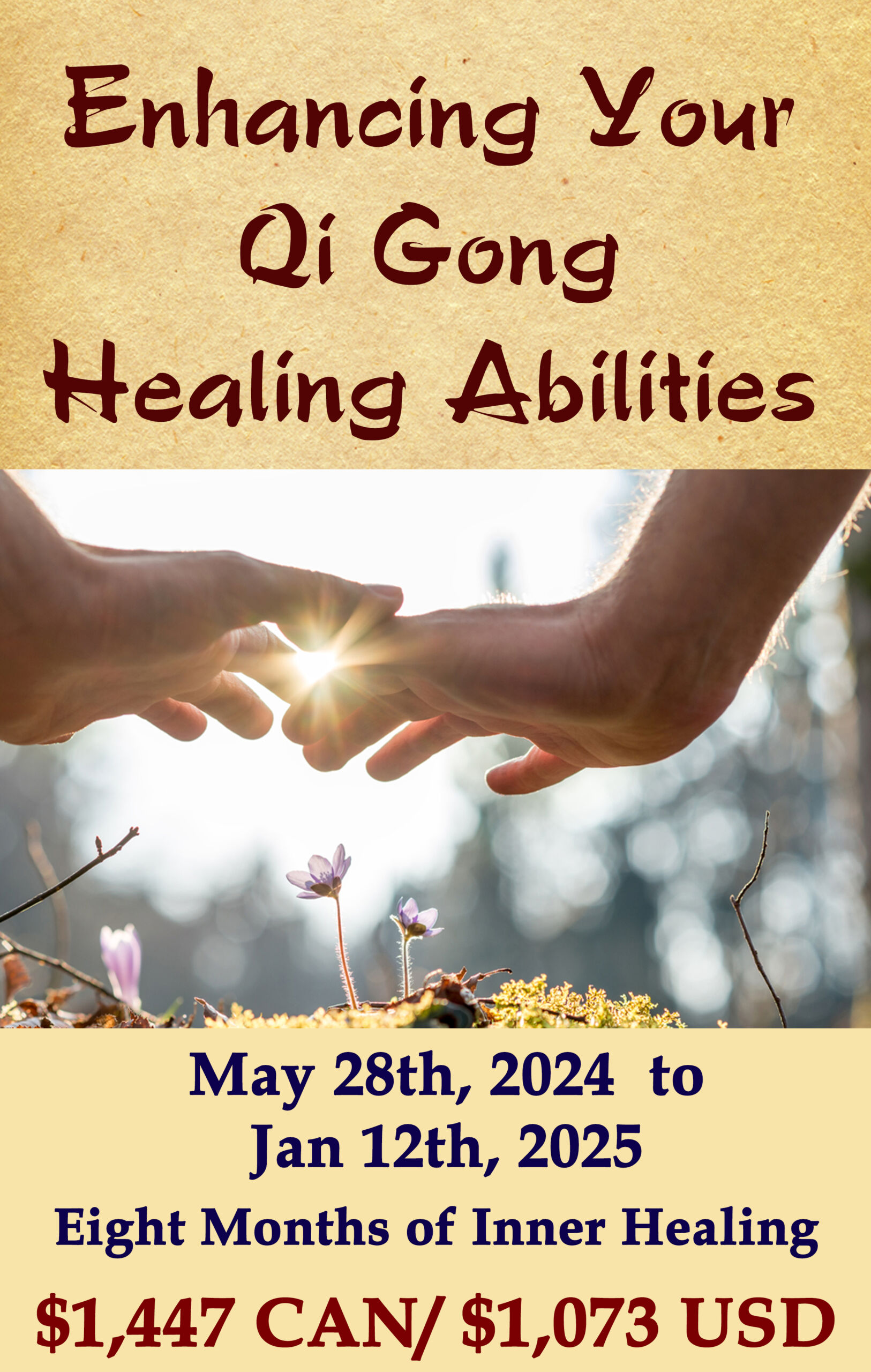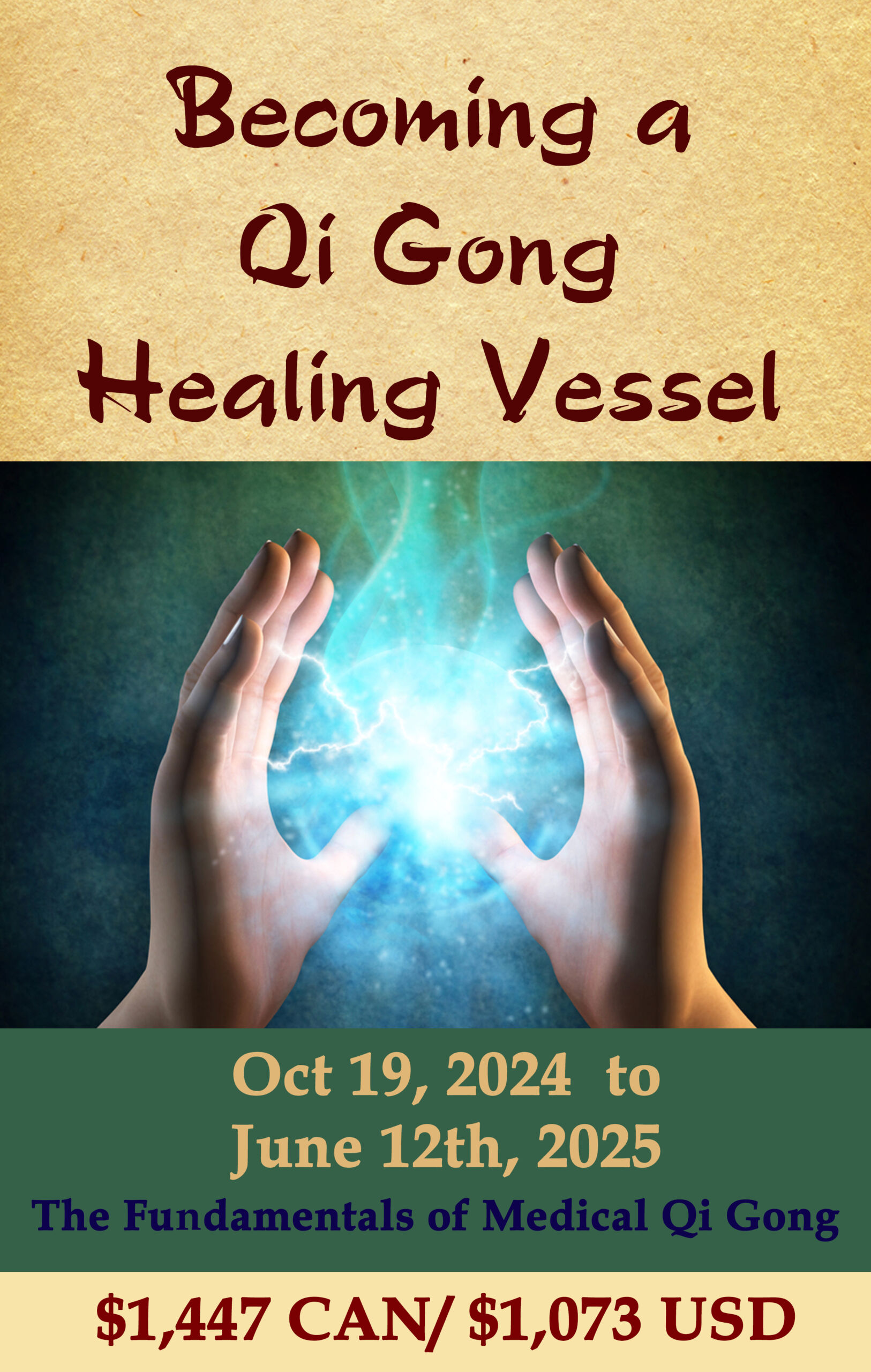This article (and practice session) is for students, practitioners, and teachers of Qi Gong (Chi Kung), Yoga, Daoist Meditation, Taijiquan (Tai Chi), and other internal (subtle) martial and spiritual arts.
In my experience, it is good to find a balance between practice sessions that are mostly silent, easy, and relaxing, with sessions that are a little challenging and ask for a lot of your attention. Every once in a while, it is also important to have sessions focusing on learning and embodying new skills and principles. A dedicated session on Gong.
The word Gong 功 as in Qi Gong or Gong Fu (Kung Fu), means skillful work, meritorious effort, practice, capacity, or competency. Developing the skills of Qi Gong and becoming highly competent at applying the more subtle principles into your practice is meant to be an art – and a life-long journey.
Like any art, Qi Gong has a primary medium. The brush and ink of Qi Gong are Awareness and Sensation. If you want to feel better, you will get the best results by sitting with how you are feeling right now. Find acceptance and understanding if you are uncomfortable in any way. If you feel well, receive every quality and benefit with gratitude.
Accepting your state – will shift your state, while also freeing your Aliveness (Qi) and Spirit (Shen).
Take a deep breath!
Remember, your medium is Awareness and Sensation.
Inhale strongly and fully. Keep your inhaling muscles active while you pause your breath for as long as feels comfortable. Be gentle but do not close your throat.
Exhale slowly and completely while you sigh…
Repeat for 3 minutes and you will lower your blood pressure measurably!
The Origin of the Inner Smile Practice
Over the last 40 years, in the Western World, there have been many authors and popular teachers sharing the practice of Qi Gong and other aspects of Daoist practice. Each of these people, mostly from Asia, has left their unique mark on the contemporary understanding of these ancient practices and the terminology that we use today.
One of the most popular Qi Gong principles to learn, practice, and feel the benefits of right away is the Inner Smile practice. If you have a previous injury, or an illness in a specific tissue or organ, just place one or both of your hands there and smile. Bring your attention to that part of your Body and Being. Feel the sensation. Accept your experience.
Let’s say it is your Liver. Locate your awareness inside your Liver. It is a part of you after all. As your Liver, smile. Feel the natural warmth of contentment and connection.
You will notice fairly quickly that your smile needs both kindness and truth. Your Liver has a lot to smile about, it keeps you going every day. Your Liver also needs you to make Gong (Skillful) decisions most of the time.
Accept the challenge and smile…
Continue for 5 – 20 minutes.
In the way I was taught, Inner Smile Qi Gong began as an essential part of an ancient Hands on Healing tradition called Inner Nourishment Practices (Nei Yang Gong). In a personal Qi Gong or Nei Yang Gong practice, you can use your hands or not, while guiding your Interactive Attention (Yi 意) to completely engage in a conscious exploration of some part of your body and/or your Being.
As you feel more deeply into your Liver, or an old emotional wound, you can hold a coherent state of nourishing and harmonizing Qi, for that unique situation.
The art of Nei Yang Gong is responding to need – with states of Being.
Imagine that you are a Healer, from long ago, who ‘Lays Hands’ on people to help them heal wounds, resolve infections, reduce pain, and balance the functions of their organs. Of course, as an ancient village Healer, you also need to deal with minor possessions, resolve disputes with Ancestors, and protect people from dangerous Spirits.
Living in a reality that is crowded with many biological and existential woes, you will probably want to proceed in the safest way possible. Smile with discernment.
Avoid the story, your medium is Awareness and Sensation.
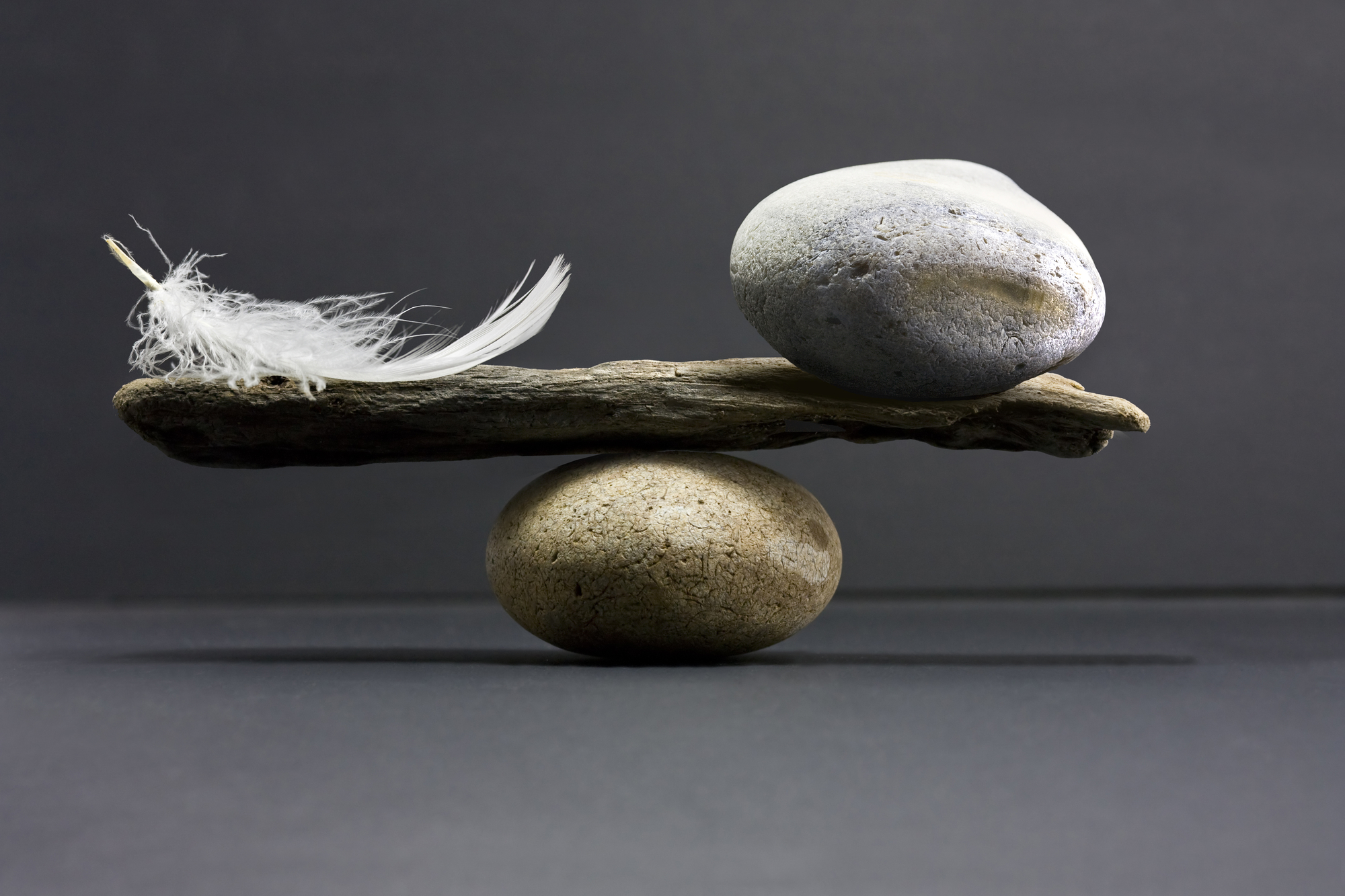
Arriving in Readiness
The process of assessing a person’s illness, especially on these levels, usually begins with a shared perceptual state. This is sometimes called Zhong Zheng 中正 – Being centred (Zhong) in your resolve (Zheng) or arriving in the eye of your hurricane. There are many ways to accomplish this, but that is beyond the scope of this conversation. If you are interested in why this is important, look into Co-Regulation in Trauma Therapy.
Now that you and your ‘patient’ are feeling connected, safe, and ready to move deeper, you can both shift into the treatment process. Smile with that smile, bringing your hands to the place you need healing the most.
As the Healer, your next interaction is to appreciate and discern what is going on within your patient’s meridians, Dan Tians, and organs.
This process is also true of your personal Qi Gong practice, you are both the healer and the patient.
Appreciative Attention
As your Qi Gong practice progresses and you start to ‘get into the groove’, you will start having new sensations. (See a previous article – Feeling Qi for the First Time)
It is the same when beginning an Inner Nourishing Qi Healing practice.
Appreciate every sensation with a smile, an open heart, while being actively intuitive and still grounded in your discernment, or C’an (see below).
Remember, you are seeking a connection with the truth, and your medium is sensation and awareness.

As a Healer, this is the beginning of making a diagnosis – or more accurately, assessing the relevant qualities of Qi, like circulation, communication, and aliveness. It is very helpful to stay open to every little quality of interaction, while also maintaining your associative thinking.
You are smiling and introducing yourself to a potential imbalance, while feeling into patterns and meaning (intuition). Imagine meeting a stranger, staying open to the possibility they will become a lifelong friend.
In Qi Gong practice, it is the same. Smile warmly, bring your attention to any wound or illness, open with appreciation, be intuitive, be honest, and keep your associative mind handy so you can also use some reasoning in a skillful way.
Does your Liver need the Qi (quality of aliveness) of the still water of a mountain lake, or the Qi of all green leaves during early summer?
In Chinese, the term C’an 参 (pronounced ts’an) means to join, to take part in, to participate, to consider (judiciously), and to completely involve oneself in any experience.
In the Chan (Zen) 禪meditation tradition, the experience of C’an is like a slowing spinning coin of perception. On one side of the coin, you have the open-faced appreciation that arises when you see a cute puppy. Try the smile of meeting a puppy…
Or the heart-opening moment when you truly begin to appreciate the wonder of your lover or your child. Try those smiles…
On the other side of the coin, your wise and patient gaze of discernment (also C’an), the face you make when the puppy poops on your shoes, your lover turns out to be human, and your child has learned to lie.
Try the smile of Appreciative Attention and the smile of Patient Discernment – or Acceptance and Truth. Become C’an 参.
Try This:
Inhale deeply
Exhale all the way. At the end of your exhale, intuitively pick an organ.
Inhale – bring your attention into the place you have chosen.
Exhale – smile with your whole Body and Being.
Inhale – open your Appreciative Attention, your C’an, like you are looking into the face of your lover, noticing the cuteness of every little detail.
Exhale – become intuition…
Inhale – what does each sensation in your organ(s) really feel like?
Exhale – smile from inside of each sensation. Awareness, Appreciation, and Discernment.
Inhale – become still and notice any changes.
Exhale – become honest, patient, and complete attention…
Inhale – Using one or both of your hands (optional),
Exhale – bring a sense of nourishing warmth to the places that need it the most.
Keep Smiling – and continue for 5 – 10 minutes. If your arms get tired, let them rest. Keep your attention on your breath, the warmth, the affection, the curiosity, the patience, and the way you will accept the challenge of self-care.
If you are experiencing anything overwhelming or constantly distracting, speak to your teacher and/or see a skilled acupuncturist. Inner Healing practices like this are VERY powerful. Sometimes, like strong medications, there are side effects.

聽勁
Ting Jin and Feeling into Your Aliveness
Qi Gong is a very sensual and experiential practice. It is a process of learning to trust your body and feel deeply into every sensation.
Shifting from a sense of impatience to a tangibly relaxed and calm embodied state is cultivated, and even expected, during any practice session. Moving between sensual states, is often like moving from ‘all over the place’, to ‘right here, right now.’ It could be said that this is like the weather of a Qi Gong practice.
Imagine that you are landing a helicopter. The weather is your mood, mindset, and Qi. This is a great metaphor for entering your Qi Gong practice. Sometimes you may feel like you are in a hurricane, and sometimes you are in the eye of the hurricane.
Listening with your whole Body and Being
In traditional Qi Gong practice, this capacity to listen, to feel inward and into your experience on every level, is the gateway to every other skill and principle of Qi Gong. In Chinese, this essential skill is called Ting Jin.
Listening to your body is a skill…
The term Ting Jin 聽勁 describes the experience of listening, smelling, and reaching with your mind – with your whole Body and Being. In a way, with everything that you are.
This is a master skill – it can be applied to everything. Consciously listening and reaching into any sensation, person, or situation, will help guide your response and your depth of empathy.
One of my favorite examples of this experience is reaching for a light switch in the dark. All of your senses, your whole body, and all of your attention is extending from the tip of your fingertips. Feeling into your sensual embodied experience could also be described as reaching into where your Mind and Body meet.
They meet in sensation and awareness, acceptance and truth.
C’an and Ting Jin…
Try these simple self-awareness exercises:
- Get very still and breath slowly and deeply.
- Feel your mouth and tongue. Which side of your tongue feels thicker?
- Feel your feet. Which one feels stiffer?
- Feel your belly. Are you holding any unconscious tension?
- Feel your neck and shoulders, while slowly moving your head around.
- If you were getting a massage, where would you want some relief?
Listening to your body takes patience and the courage to feel what you are actually feeling. As you begin having regular and intimate conversations with your body, take your time, consider what you feel and why, while trusting your body and your sensations.
Reawaken your inner trust. You can experience your body as a simple vehicle, or you can explore practices like Qi Gong and Yoga, that focus on a tangible collaboration of your Body, Mind, Heart, and Soul. This gradual dance of finding tension and distress, and releasing it as intuitively as you can, will, over time, build a sense of confidence in your awareness, acceptance, and your practice.
Soon, you may find yourself feeling relaxed and at ease with many of the ‘stories’ that used to keep you up at night.
Now you are ready to dance with the Universe! In my experience, once people feel at home in their bodies, they naturally want to feel at home in their Universe. What if that were possible? Feeling connected to everything and everyone?
If you have a playful and curious attitude with your practice and have developed the skill of ‘feeling into’ life, the Sky is the limit – on many levels.
This changes people’s mindset in some very profound ways.
Sensation is a kind of language, including pleasure, pain, stiffness, numbness, worry, apprehension, balance, sadness, hostility, acceptance, spiritual euphoria, the underlying belief that something is missing in your life; and hopefully, the realization that absolutely nothing is wrong.
Learning to feel into your Mojo, Mindset, and Mood, asks you to learn to feel into the mysterious chaos of sensation, emotion, and meaning. Like any other new language and friendship, you will get the most from listening – a lot!
Breathe in – which of your nostrils feels more open…?
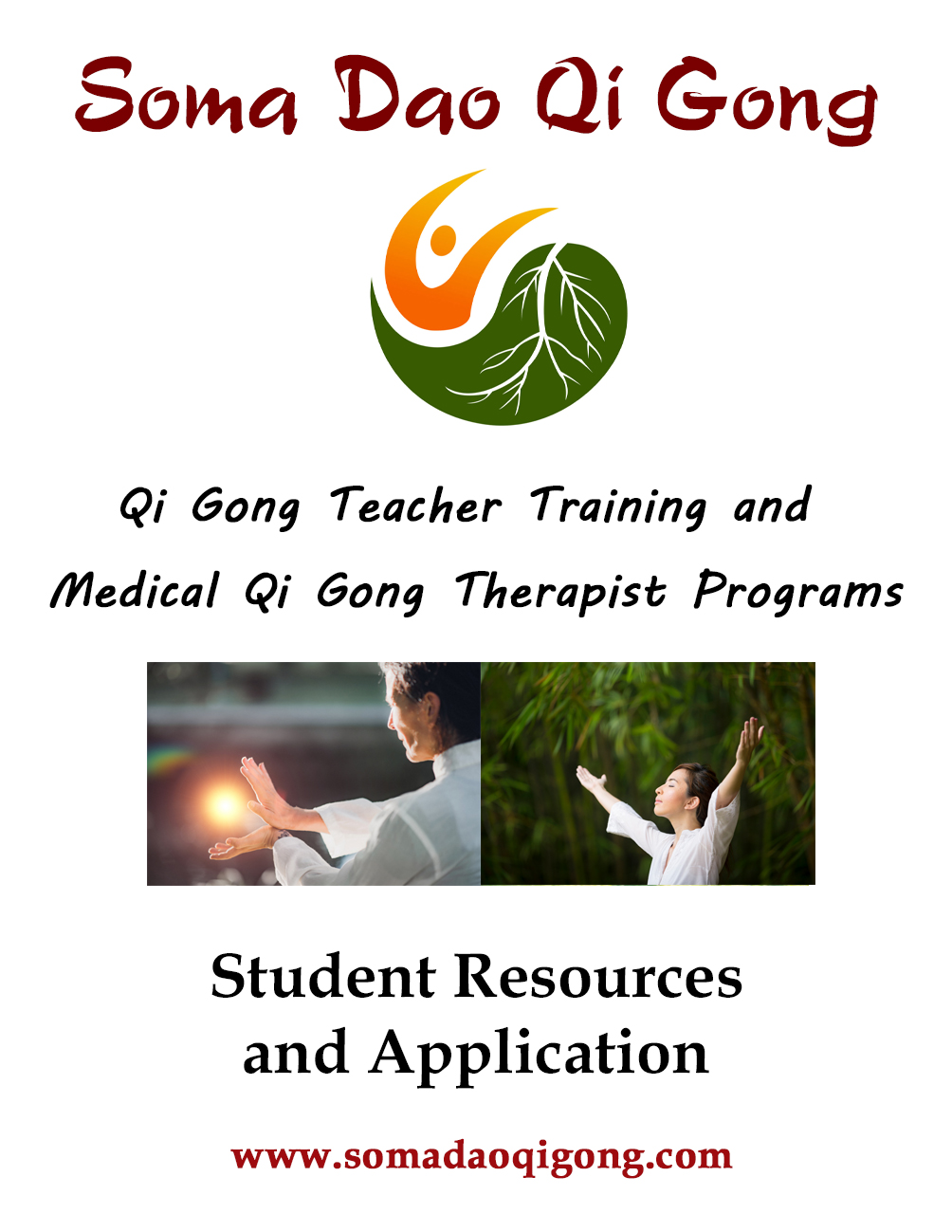
I am interested in learning more about becoming a Qi Gong Teacher and/or a Medical Qi Gong Therapist and would like to receive your MONTHLY newsletter.
YES! Send me a copy of the Student Resource Guide
(We respect your privacy)
2024 Courses with Dr. Michael Smith
Beginning April 8, 2024
Learn the skills, practices, and principles necessary to safely and successfully guide others through several kinds of Qi Gong Classes.
